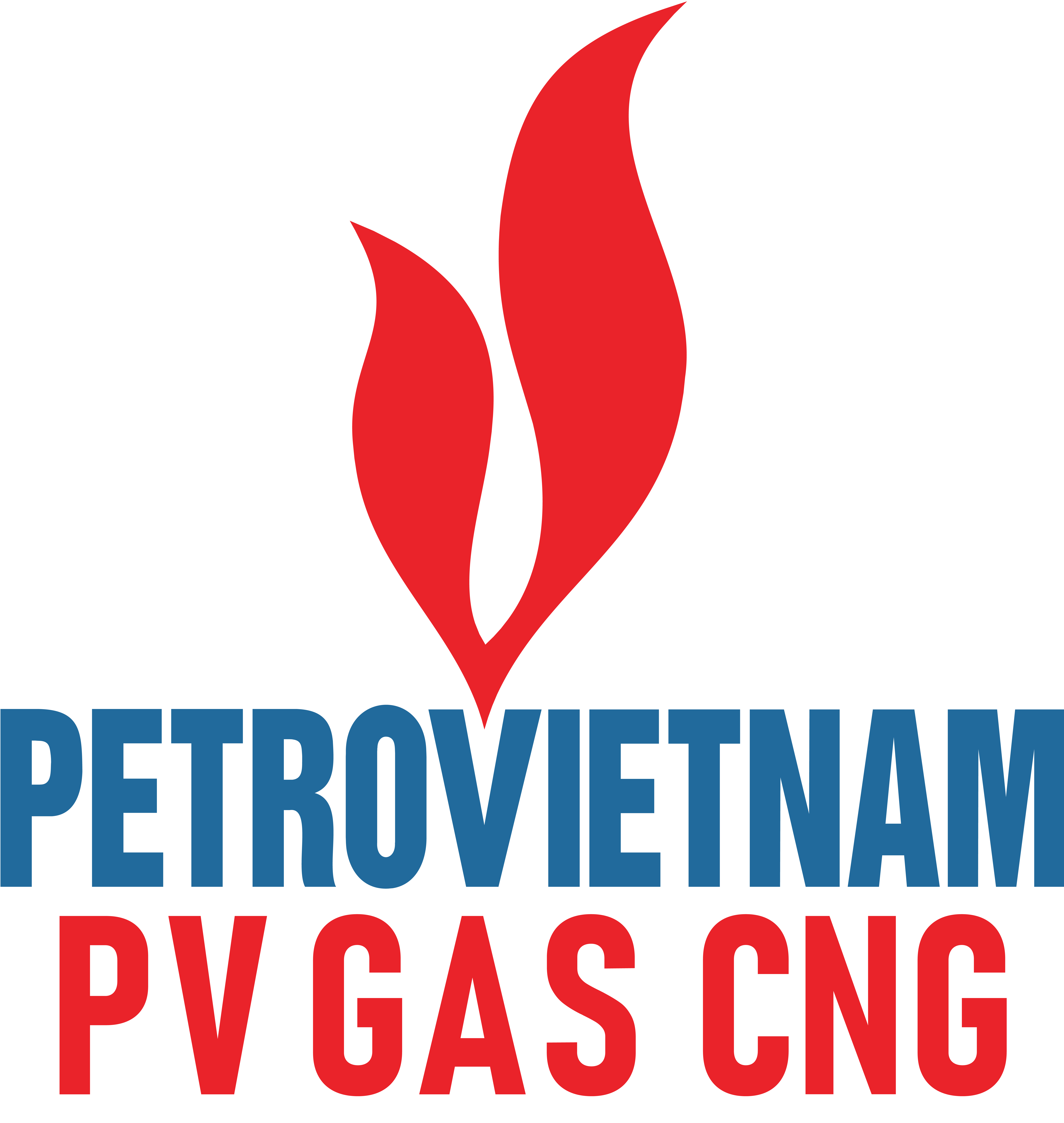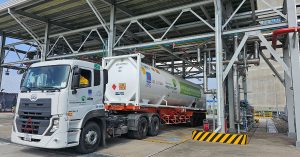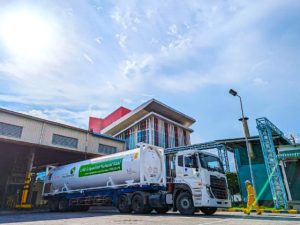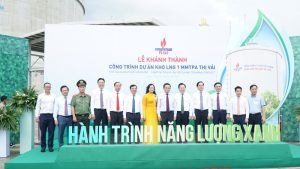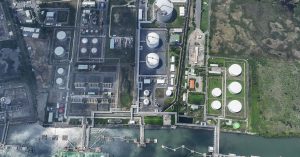Environmental pollution in big cities is a problem all over the world, not only in Vietnam. The big reason is due to the high density of vehicles in the city and emission of a large amount of CO2 causing air pollution. CNG (Compressed Natural Gas) is currently considered as an alternative to existing fuels such as: FO oil, DO oil, LPG, etc. to minimize environmental pollution.
CNG is created by compressing natural gas (mainly methane – CH4). CNG is used in modified conventional gasoline/internal combustion engine cars or in vehicles manufactured specifically for specialized CNGs, with separate gasoline systems for extended range (dual fuel) or combined with other fuels such as diesel.
A lot of benefits
Compared to vehicles running on gasoline or diesel fuel, CNG is considered to bring higher efficiency not only in terms of economy but also in environmental protection.
When using CNG as a fuel, it reduces emissions by 20% of CO2, 30% of NOx, 70% of SOx compared to oil-based fuels. When used in engines, CNG reduces hydrocarbon emissions by up to 50% compared to gasoline engines.
In the world, CNG is used to replace gasoline due to its outstanding advantages. CNG is easy to disperse, does not accumulate like gasoline and LPG vapors. Because the combustion process occurs completely, without causing deposits in the combustion equipment and carburetors of vehicles, CNG helps to improve efficiency, prolong maintenance cycles and equipment life.
In terms of economy, the reality shows that cost of cars using CNG natural gas is about 40% lower than gasoline or diesel cars. The price of CNG is stable in the long run compared to the price of petroleum products. Therefore, today CNG is widely used in the world as an engine fuel to replace gasoline and oil.
Any gasoline vehicle can now be converted into a dual fuel vehicle (gasoline/CNG). Authorized facilities can retrofit and install CNG cylinders, CNG injection systems and electronics.
Global popularity
Due to its environmental friendliness and competitive price, CNG is widely used from buses, locomotives, and personal vehicles… Currently, the use of CNG vehicles is increasing in Europe, South America, and Europe, Asia…
Italy can be considered as one of the first countries in the world to use CNG to replace traditional petroleum fuel. Currently in this country there are 1,173 CNG stations providing hundreds of thousands of vehicles. This helps the air here to reduce pollution a lot, in addition to economic benefits. Italian firms, or foreign firms such as: Fiat, Volkswagen, Rnault, Volvo, Mercedes… all sell many models of cars and small trucks running on gasoline/CNG.
Unlike Italy, Belgium is considered a new recipient of CNG. In Belgium, CNG is a very new type of fuel. At the beginning of 2014, Belgium had only 17 CNG refueling stations, all in Flanders. But this is quickly changing, as of 2017, the country had 76 CNG refueling stations.
The most dramatic change in the use of CNG has to be in Germany. In Germany, by 2010, it is expected that there will be 2 million motor vehicles of all kinds using CNG. The cost of CNG fuel is 1/3 to 1/2 of that of other fossil fuels in Europe, which is the main driver for this transition. In 2016, Germany had about 900 CNG stations. Major German car manufacturers such as Volkswagen, Mercedes, Opel, Audi offer CNG engines on most of their models.
Asia is an early transition to using CNG clean energy. Public transport such as buses and taxis in Singapore use CNG, accounting for an increasingly large proportion. In recent years, the country’s private cars have also switched from using gasoline to using CNG. Singapore currently has five CNG natural gas filling stations. In particular, the 5th and largest refueling station in the world located at Toh Tuck was opened by Union Group in September 2009, with 46 refueling nozzles.
Particularly, Iran is the country with the largest number of CNG-powered vehicles and the world’s largest CNG distribution network. The country has 2,335 CNG refueling stations, with 13,534 CNG refueling nozzles, the number of vehicles using CNG exceeds 3.5 million units. CNG consumption of Iran’s transportation industry is about 20 million m3 per day
Other countries such as Malaysia, China, the Philippines … have long used this clean fuel.
Vietnam transforms
Ho Chi Minh City is using CNG fuel bus. Initially deployed, this type of bus has demonstrated outstanding advantages in terms of safety, economic efficiency, and environmental friendliness. According to the 2018-2020 roadmap, Ho Chi Minh City needs to invest in 3,121 new buses, of which CNG vehicles are expected to account for 75%.
Recently, the bus system using clean energy CNG has officially operated connecting the two provinces of Binh Duong and Binh Phuoc. This is a high-quality bus route with 25 buses installed with security cameras, air conditioning systems, using electronic cards to calculate fares. Every 20 minutes, there will be a bus departing connecting the two cities, which has partly met the travel needs. In fact, many workers have signed up to go to work by high-quality bus.
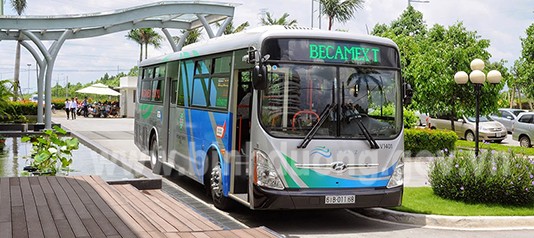
Bus using CNG clean fuel managed and operated by Becamex Tokyu Bus in Binh Duong
Hanoi is also one of the leading cities in using CNG buses. Recently, on 18 November 2019, Hanoi opened 4 more bus routes using CNG, bringing the total number to 7 routes.
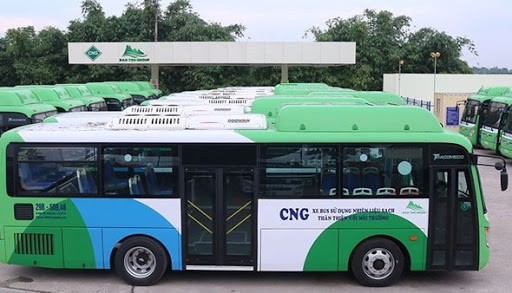
Buses using CNG clean fuel are managed and operated by Bao Yen Company in Hanoi
Many experts say that the use of clean energy such as CNG to replace a part (difficult to completely replace) for gasoline in public and private transport is an inevitable trend. This transformation is as fast as possible, aiming to achieve the dual purpose of economy and environmental protection.
The old petrol-powered buses that emit black smoke will gradually be replaced by buses using clean energy, including CNG, in big cities of Vietnam. At that time, the air quality will be better, environmental pollution will be reduced, human health and quality of life will be more guaranteed.
Situation of CNG production in Vietnam
CNG Vietnam Joint Stock Company (A member unit of PetroVietnam Gas Corporation – PV GAS) is the only unit of PV GAS to supply CNG clean fuel to the entire Vietnamese market. In addition to providing CNG for transportation, CNG is now mainly supplied by CNG Vietnam as a fuel for industrial households stretching from the North to the South, contributing to reducing environmental pollution and bringing many benefits to customers such as: cheaper cost of gasoline, DO/FO oil, LPG…, reduction of equipment maintenance and repair costs…

CNG Plant in Phu My – Ba Ria Vung Tau
